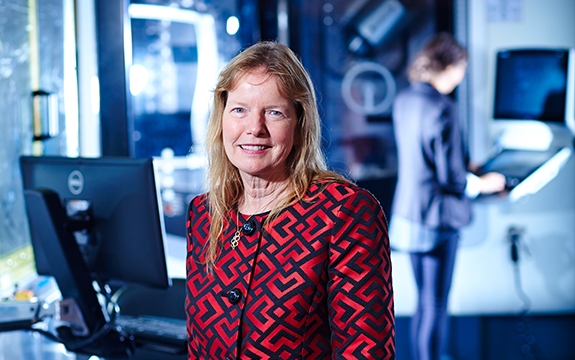Dr Leonie Walsh is an advocate for science as a career path for women

In Summary
This article originally featured in Swinburne’s Venture magazine
Leonie Walsh sees many more women in science today than in the early stages of her career. “I didn’t have my first female manager until I was 40,”
Dr Walsh says. “I had a number of female peers in the United States but I really didn’t interact with professional women for long periods of my career.”
The former Victorian government lead scientist and one of Swinburne’s most successful science alumni says much has changed. “Now I see a mix of highly capable women coming through. I spend a higher proportion of my time around professional women. I see that they are quite resilient, determined and willing to take risks,” she says.
“The young ones I see in the start-up space have a lot of self-confidence. Also, they have empathy and a willingness to support others in the professional female community.”
As an advocate for science as a career path, Dr Walsh notes there is a need for a multifaceted approach to attracting more women into STEMM – science, technology, engineering, mathematics and medicine.
“You have to approach it at the earliest parts of the education system, even in early childhood development, programs that feed on each other throughout the education system,” she says. “It’s about getting to the parents and teachers and being able to improve communication on the opportunities and potential for young women’s careers.”
Dr Walsh’s interest in science began when she was seven and conducted science “experiments” in her bathroom, mixing shampoo, hair oil and talcum powder to see what happened.
Her interest was encouraged at Mildura Technical School in northern Victoria where she thrived in discovering how work in the laboratory could be applied to our daily world.
Dr Walsh says she found a similar learning environment at Swinburne. She was attracted to the university because of its strong science and engineering courses, and also saw the career advantages of an internship as part of her Applied Science degree.
She notes that Swinburne had excellent connections with multinational companies, including GlaxoSmithKline and, significantly for her, Dow Chemical. “Swinburne offered a co-operative degree that meant that halfway through your education you’d spend a year in industry,” she says.
On completion of the degree, these companies scouted students for career placements. “It was at that career session that I was exposed to Dow Chemical,” she says. “The relationships that Swinburne has with industry are incredibly valuable for graduates.”
Dr Walsh graduated with a Bachelor of Applied Science degree in 1981 and accepted an offer from Dow as a graduate chemist. “Most graduates ended up in the lab; I was more customer-focused,” she says.
Her role at Dow, based in Altona in the early 1980s, was in development for products that included tile adhesives, non-woven nappies and latex-modified concrete for roads.
“It was a fabulous training ground,” she says. “You’d go out and explore an opportunity with a company, you’d come back, tinker a bit in the lab and return the product to the customer.”
From 1998 to 2002, while working with Dow in the US, Dr Walsh was part of a team that created the first elastic fibre out of polyethylene. “They had a breakthrough in the catalyst technology, meaning you could make plastics but tailor the properties, design them to model the reaction and specifically design what you wanted out of that plastic,” she says.
She returned to Australia in 2002 and in 2011 became the first female president of the Australasian Industrial Research Group in 50 years, she took on roles focusing on industry and academic collaboration, and was nominated as a Fellow of the Academy of Technological Sciences and Engineering.
In 2013 she was appointed as the Victorian government’s inaugural lead scientist, liaising between academia, business and government.
Reflecting on her career, Dr Walsh credits strong relationships with role models and mentors for her success.
John Ralston, one of Australia’s top colloid scientists, motivated her to do a graduate diploma in colloid science (a combination of chemistry, physics, nanoscience and more). His successor, Ian Harding, challenged her to do a Master’s degree, she says.
And Alexander Gosling, who sits on Swinburne advisory boards, was “always nudging me to take on roles I don’t think I’m ready for or too busy for. He has been responsible indirectly for some of my most significant career progressions”.
Dr Walsh was awarded an Honorary Doctorate (HonDUniv) from Swinburne in 2014 for contributions and leadership in scientific enterprises, innovation and the community. Now she has been able to give back to those who supported her as she progressed.
“In my role as an ambassador for Women in STEMM Australia (a non-profit organisation founded in 2014), I am fortunate to have the opportunity to work as a role model and mentor and contribute to other young people’s careers,” Dr Walsh says.

